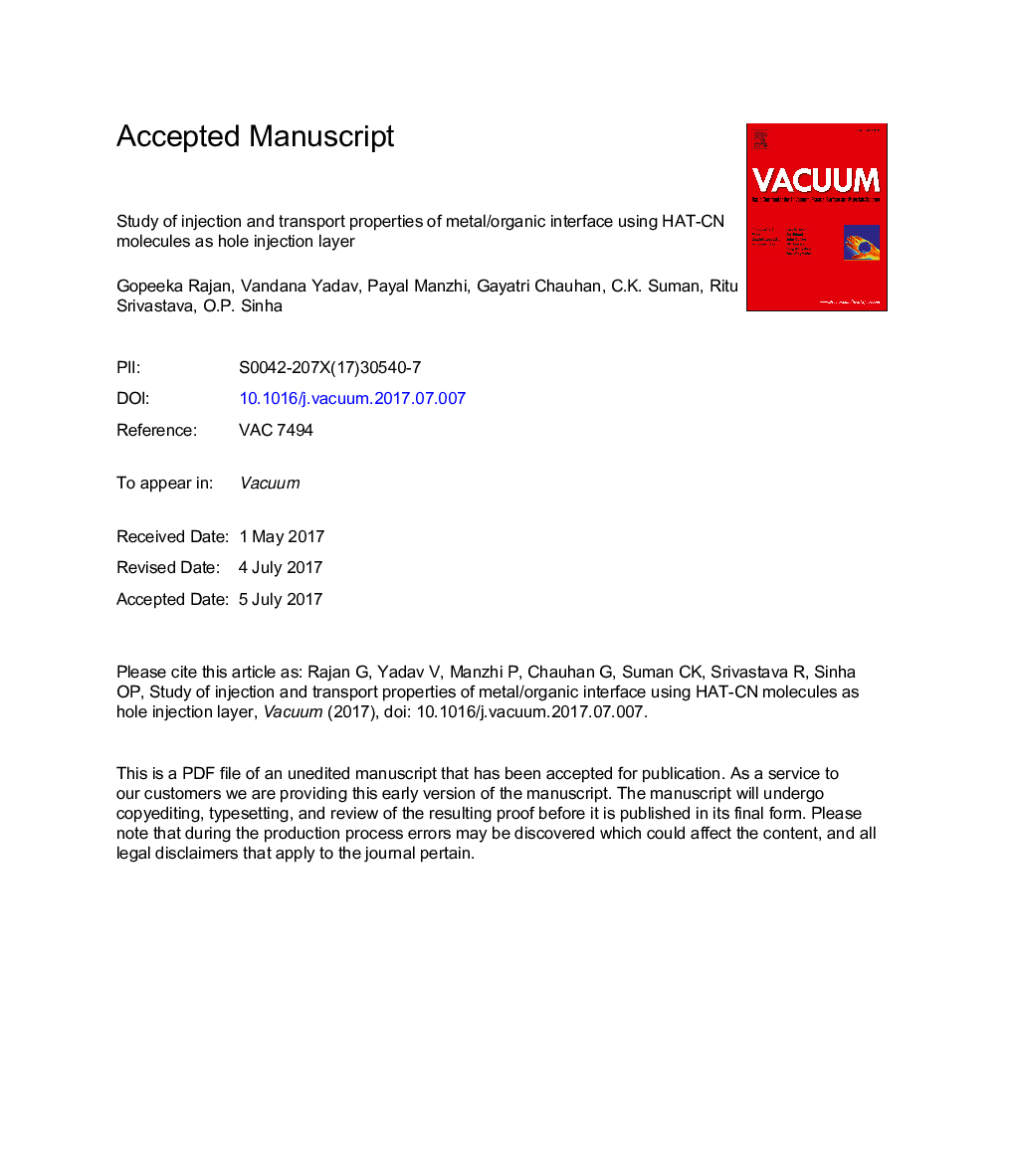| کد مقاله | کد نشریه | سال انتشار | مقاله انگلیسی | نسخه تمام متن |
|---|---|---|---|---|
| 8044789 | 1518924 | 2017 | 17 صفحه PDF | دانلود رایگان |
عنوان انگلیسی مقاله ISI
Study of injection and transport properties of metal/organic interface using HAT-CN molecules as hole injection layer
دانلود مقاله + سفارش ترجمه
دانلود مقاله ISI انگلیسی
رایگان برای ایرانیان
کلمات کلیدی
موضوعات مرتبط
مهندسی و علوم پایه
مهندسی مواد
سطوح، پوششها و فیلمها
پیش نمایش صفحه اول مقاله

چکیده انگلیسی
1,4,5,8,9,11-hexaazatriphenylene-hexacarbonitrile (HAT-CN) molecule have been studied as hole injection layer for application in organic semiconductor based devices with potential to modify the electronic properties of electrodes due to its strong electron-withdrawing property. Thermally stable hole transport material 2, 7-bis [N, N-bis (4-methoxy-phenyl) amino]-9, 9-spirobifluorene (MeO-Spiro-TPD) has been used to fabricate hole only devices. To make the injection efficient at metal/organic interface and to reduce the driving voltage of the organic devices, the interface has been modified with a thin layer of highly electron accepting HAT-CN material. Modified interface has been investigated at a different range of thicknesses of HAT-CN. This interface modification resulted in the switching of injection limited transport to space charge limited conduction mechanism with the introduction of HAT-CN layer at metal/organic interfaces. The hole injection property has been found to increase with an increase in HAT-CN thickness. When these modified substrates were used as a hole injecting contacts in organic light emitting diodes (OLEDs), they have shown an increase in current density and device efficiency.
ناشر
Database: Elsevier - ScienceDirect (ساینس دایرکت)
Journal: Vacuum - Volume 146, December 2017, Pages 530-536
Journal: Vacuum - Volume 146, December 2017, Pages 530-536
نویسندگان
Gopeeka Rajan, Vandana Yadav, Payal Manzhi, Gayatri Chauhan, C.K. Suman, Ritu Srivastava, O.P. Sinha,